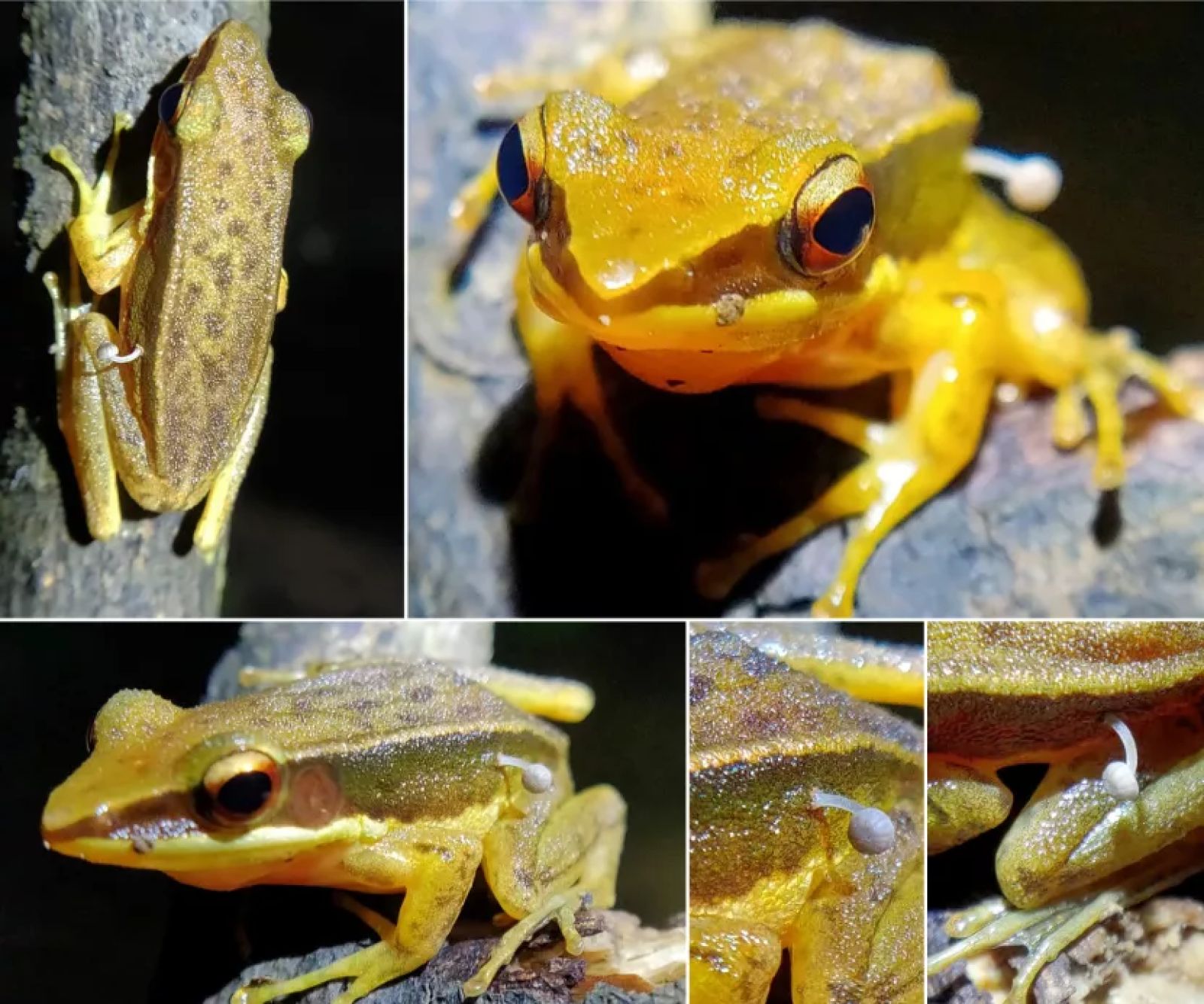A Fungus Growing on a Frog Leaves the Scientific World Stunned
Published by Cédric,
Article Author: Cédric DEPOND
Source: Reptiles and Amphibians
Other Languages: FR, DE, ES, PT
Article Author: Cédric DEPOND
Source: Reptiles and Amphibians
Other Languages: FR, DE, ES, PT
Follow us on Google News (click on ☆)
Among the frogs spotted during this excursion, one in particular caught the researchers' attention. Perched on a twig, it displayed an astonishing feature: a tiny fungus growing on its flank. Such an unusual sight was as fascinating as it was for the scientific team.

This frog, identified as Hylarana intermedia, is native to the region. The scientists took pictures of this strange association between the amphibian and the fungus, quickly sharing their findings in a study published in Reptiles and Amphibians.
Like bacteria, many types of fungi coexist with most living creatures. However, unlike human skin where fungi grow on the surface, the presence of an actual fungus (the fleshy body of the fungus) on a living animal is an unprecedented observation for science.
Unfortunately, without a specimen collected, the exact nature of this fungal growth remains speculative. Researchers wonder whether the fungus's filaments have penetrated the frog's skin or if it's merely a superficial growth.
This discovery has sparked keen interest among scientists and nature enthusiasts alike. The frog's photos have been compared to those of fungi from the Mycena genus, usually found on decaying wood. The presence of this fungus on a living amphibian poses an intriguing puzzle: how did it manage to grow on the frog? Is it harmless or pathogenic? Questions that scientists are still trying to answer with only visual data at their disposal.
Although this growth appears to be harmless, other fungi are known to be much less friendly towards their hosts. Chytridiomycosis, for example, caused by a fungus named Batrachochytrium dendrobatidis, has been linked to massive declines in amphibian populations. In this case, only further studies, and possibly a second observation, will unveil the mysteries of this unique specimen.